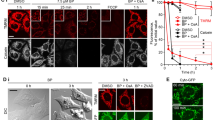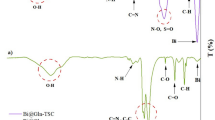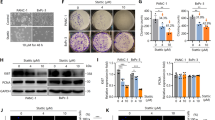Abstract
A series of bisindolylmaleimide (Bis) compounds were designed as analogs of the natural compound staurosporine (STS), which is a potent inducer of apoptosis. Many of the Bis analogs appear to be highly selective inhibitors of the protein kinase C (PKC) family, including PKC-α, -β, -γ, -δ, -ε, and -ζ, unlike STS, which is an inhibitor of a broad spectrum of protein kinases. In this report we describe the effects of the Bis analogs, Bis-I, Bis-II, Bis-III and Ro-31-8220 on the survival and proliferation of HL-60 cells, which have been widely used as a model cell system for studying the biological roles of PKC. Treatment of HL-60 cells with Bis-I, Bis-II, Bis-III, or Ro-31-8220 blocked phosphorylation of the PKC target protein Raf-1 with equal potency but did not appear to affect the general phosphorylation of proteins by other kinases. However, the biological effects of the Bis compounds were different: Bis-I and Bis-II had no observable effects on either cell survival or proliferation; Bis-III inhibited cell proliferation but not survival, whereas Ro-31-8220 induced apoptosis. These results indicated that the members of the PKC family which could be inhibited by the Bis analogs were required neither for survival nor proliferation of HL-60 cells. Analyses of cells treated with Ro-31-8220 showed that the apoptotic effect of Ro-31-8220 on HL-60 cells was mediated by a well-characterized transduction process of apoptotic signals: i.e., mitochondrial cytochrome c efflux and the activation of caspase-3 in the cytosol. Moreover, the ability of Ro-31-8220 to induce apoptotic activation was completely inhibited by the over-expression of the apoptotic suppressor gene, Bcl-2, in the cells. Interestingly, proliferation of the Bcl-2-over-expressing cells was still sensitive to the presence of Ro-31-8220, suggesting that the inhibitory effects of Ro-31-8220 on viability and cell proliferation were mediated by different mechanisms. In particular, the apoptotic effect of Ro-31-8220 on cells was not altered by the presence of an excess amount of the other Bis analogs, suggesting that this effect is mediated by a factor(s) other than PKC or by a mechanism which was not saturable by the other Bis analogs. Finally, structure-function analyses of compounds related to Ro-31-8220 revealed that a thioamidine prosthetic group in Ro-311-8220 was largely responsible for its apoptotic activity. Cell Death and Differentiation (2000) 7, 521–530
Similar content being viewed by others
Log in or create a free account to read this content
Gain free access to this article, as well as selected content from this journal and more on nature.com
or
Abbreviations
- Bis:
-
bisinodolylmaleimide
- PMA:
-
phorbol-12-myristate acetate
- STS:
-
staurosporine
- CaM kinase:
-
calmodulin-dependent kinase
- PKA:
-
protein kinase A
- PKG:
-
protein kinase G
References
Vaux D and Korsmeyer SJ . (1999) Cell death in development. Cell 96: 245–254
Cory S . (1998) Cell death throes. Proc. Natl. Acad. Sci. USA 95: 12077–12079
Green D . (1998) Apoptotic pathways: the roads to ruin. Cell 94: 695–698
Raff M . (1998) Cell suicide for beginners. Nature 396: 119–122
Alnemri ES, Livingston DJ, Nicholson DW, Salvesen G, Thornberry NA, Wong WW and Yuan J . (1996) Human ICE/CED-3 protease nomenclature. Cell 87: 171
Cryns V and Yuan J . (1998) Proteases to die for. Genes Dev. 12: 1551–1570
Thornberry NA and Lazebnik Y . (1998) Caspases: enemies within. Science 281: 1312–1316
Porter AG, Ng P and Janicke R . (1997) Death substrates come alive. BioEssays 19: 501–507
Green DR and Reed JC . (1998) Mitochondria and apoptosis. Science 281: 1309–1312
Reed JC . (1997) Double identity for proteins of the Bcl-2 family. Nature 387: 773–776
Grant S, Turner AJ, Bartimole TM, Nelms PA, Joe VC and Jarvis WD . (1994) Modulation of 1-beta-D-[arabinofuranosyl] cytosine-induced apoptosis in human myeloid leukemia cells by staurosporine and other pharmacological inhibitors of protein kinase c. Oncol. Res. 6: 87–99
Jarvis WD, Turner AJ, Povirk LF, Traylor RS and Grant S . (1994) Induction of apoptotic DNA fragmentation and cell death in HL-60 human promyelocytic leukemia cells by pharmacological inhibitors of protein kinase C. Cancer Res. 54: 1707–1714
Zhang W, Lawa RE, Hintona DR, Su Y and Couldwell WT . (1995) Growth inhibition and apoptosis induction in human neuroblastoma SK-N-SH cells induced by hypericin, a potent inhibitor of protein kinase c. Cancer Lett. 96: 31–35
Hamilton HB, Hinton DR, Law RE, Gopalakrishna R, Su YZ, Chen ZH, Weiss MH and Couldwell WT . (1996) Inhibition of cellular growth and induction of apoptosis in pituitary adenoma cell lines by the protein kinase c inhibitor hypericin: potential therapeutic application. J. Neurosurg. 85: 329–334
Kobayashi D, Watanabe N, Yamaguchi N, Tsuji N, Safo T, Sasaki H, Okamoto T and Niitsu Y . (1997) Protein kinase c inhibitors augment tumor-necrosis factor-induced apoptosis in normal human diploid cells. Chemother. 43: 415–423
Murray NR and Fields AP . (1997) Atypical protein kinase c iota protects human leukemia cells against drug-induced apoptosis. J. Biol. Chem. 272: 27521–27524
Wang S, Urana JA, Bartimole TM, Freemerman AJ, Jarvis WD, Kramer LB, Krystal G, Dent P and Grant S . (1997) Agents that down-regulate or inhibit protein kinase c circumvent resistance to 1-beta-D-arabinofuranosylcytosine-induced apoptosis in human leukemia cells that overexpress bcl-2. Mol. Pharmacol. 52: 1000–1009
Whitman SP, Civoli F and Daniel LW . (1997) Protein kinase c beta II activation by 1-beta-D-arabinofuranosylcytosine is antagonistic to stimulation of apoptosis and bcl-2 alpha down regulation. J. Biol. Chem. 272: 23481–23484
Caponigro F, French RC and Kaye SB . (1997) Protein kinase c: a worthwhile target for anticancer drugs? Anticancer Drugs 8: 26–33
Datta R, Kojima H, Yoshida K and Kufe D . (1997) Caspase-3-mediated cleavage of protein kinase C δ in induction of apoptosis. J. Biol. Chem. 272: 20317–20320
Ruvolo PP, Deng X, Carr BK and May WS . (1998) A functional role for mitochondrial protein kinase Ca in Bcl2 phosphorylation and suppression of apoptosis. J. Biol. Chem. 273: 25436–25442
Ruegg UT and Burgess GM . (1989) Staurosporine, K-252 and UCN-01: potent but nonspecific inhibitors of protein kinases. Trends Pharmacol. Sci. 7: 541–546
Omura S, Sasaki Y, Iwai Y and Takeshima H . (1995) Staurosporine, a potentially important gift from a microorganism. J. Antibiotic. 48: 535–548
Harkin ST, Cohen GM and Gescher A . (1998) Modulation of apoptosis in rat thymocytes by analogs of staurosporine: lack of direct association with inhibition of protein kinase C. Mol. Pharmacol. 54: 663–670
Villalba M . (1998) Bisindolylmaleimide prevents cerebellar granule cell apoptosis: a possible role for PKC. Neuroreport 9: 1713–1717
Nishizuka Y . (1995) Protein kinase C and lipid signaling for sustained cellular responses. FASEB J. 9: 484–496
Reyland ME, Anderson SM, Matassa AA, Barzen KA and Quissell DO . (1999) Protein kinase C δ is essential for etoposide-induced apoptosis in salivary gland acinar cells. J. Biol. Chem. 274: 19115–19123
Zhao X, Geschwend JE, Powell CT, Foster RG, Day KC and Day ML . (1997) Retinoblastoma protein-dependent growth signal conflict and caspase activity are required for protein kinase C-signaled apoptosis of prostate epithelial cells. J. Biol. Chem. 272: 22751–22757
Shao RG, Cao CX and Pommier Y . (1997) Activation of PKC alpha downstream from caspases during apoptosis induced by 7-hydroxystaurosporine or the topoisomerase inhibitors, camptothecin and etoposide in human myeloid leukemia HL-60 cells. J. Biol. Chem. 272: 31321–31325
Denning MF, Wang Y, Nickoloff BJ and Wrone-Smith T . (1998) Protein kinase Cδ is activated by caspase-dependent proteolysis during ultraviolet radiation-induced apoptosis of human keratinocytes. J. Biol. Chem. 273: 29995–30002
Toullec D, Pianetti P, Coste H, Bellevergue P, Grand-Perret T, Ajakane M, Baudet V, Boissin P, Boursier E, Loriolle F, Duhamel L, Charon D and Kirilovsky J . (1991) The bisindolylmaleimide GF 109203X is a potent and selective inhibitor of protein kinase C. J. Biol. Chem. 266: 15771–15781
Davis PD, Hill CH, Lawton G, Nixon JS, Wilkinson SE, Hurst SA, Keech E and Turner SE . (1992a) Inhibitors of protein kinase c. 1. 2,3-bisarylmaleimides. J. Med Chem. 35: 177–184
Davis PD, Elliott LH, Harris W, Hill CH, Hurst SA, Keech E, Kumar MKH, Lawton G, Nixon JS and Wilkinson SE . (1992b) Inhibitors of protein kinase c. 2. Substituted bisindolylmaleimides with improved potency and selectivity. J. Med. Chem. 35: 994–1001
Martiny-Baron G, Kazanietz MG, Mischak H, Blumberg PM, Kochs G, Hug H, Marme D and Schaechtele C . (1993) Selective inhibition of protein kinase C isozymes by the indolocarbazole Go 6976. J. Biol. Chem. 268: 9194–9197
Wilkinson SE, Parker PJ and Nixon JS . (1993) Isoenzyme specificity of bisindolylmaleimides, selective inhibitors of protein kinase C. Biochem. J. 294: 335–337
Birchall AM, Bishop J, Bradshaw D, Cline A, Coffey J, Elliott LH, Gibson VM, Greenham A, Hallam TJ, Harris W, Hill CH, Hutchings A, Lamont AG, Lawton G, Lewis EJ, Maw A, Nixon JS, Pole J, Wadsworth J and Wilkinson SE . (1994) Ro-32-0432, a selective and orally active inhibitor of protein kinase c prevents T-cell activation. J. Pharmacol. Exp. Therap. 268: 922–929
Morrison DK and Cutler RE . (1997) The complexity of Raf-1 regulation. Curr. Opin. Cell Biol. 9: 174–179
Earnshaw WC . (1995) Nuclear changes in apoptosis. Curr. Opin. Cell Biol. 7: 337–343
Hsu H-L and Yeh N-H . (1996) Dynamic changes of NuMA during the cell cycle and possible appearance of a truncated form of NuMA during apoptosis. J. Cell Sci. 109: 277–288
Wyllie AH, Morris RG, Smith AL and Dunlop D . (1984) Chromatin cleavage in apoptosis: association with condensed chromatin morphology and dependence on macromolecular synthesis. J. Pathol. 142: 67–77
El-Deiry WS . (1997) Role of oncogenes in resistance and killing by cancer therapeutic agents. Curr. Opin. Oncol. 9: 79–87
Ibrado AM, Huang Y, Fang G, Liu L and Bhalla K . (1996) Overexpression of Bcl-2 or Bcl-XL inhibits Ara-C-induced CPP32/Yama protease activity and apoptosis of human acute myelogenous leukemia HL-60 cells. Cancer Res. 56: 4743–4748
Han Z, Bhalla K, Pantazis P, Hendrickson EA and Wyche JH . (1999) Cif (cytochrome c efflux-inducing factor) activity is regulated by Bcl-2 and caspases and correlates with the activation of Bid. Mol. Cell. Biol. 19: 1381–1389
Sellins KS and Cohen JJ . (1987) Gene induction by γ-irradiation leads to DNA fragmentation in lymphoctes. J. Immunol. 139: 3199–3206
Lowe SW, Schmitt EM, Smith SW, Osborne BA and Jacks T . (1993) p53 is required for radiation-induced apoptosis in mouse thymocytes. Nature 362: 847–849
Collins MKL, Marvel J, Malde P and Lopez-Rivas A . (1992) Interleukin 3 protects murine bone marrow cells from apoptosis induced DNA damaging agents. J. Exp. Med. 176: 1043–1051
Bertrand R, Solary E, O'Connor P, Kohn KW and Pommier Y . (1994) Induction of a common pathway of apoptosis by staurosporine. Exp. Cell Res. 211: 314–321
Han Z, Chatterjee D, Early J, Pantazis P, Hendrickson EA and Wyche JH . (1996) Isolation and characterization of an apoptosis-resistant mutant of human leukemia HL-60 cells that has switched expression from Bcl-2 to Bcl-X. Cancer Res. 56: 1621–1628
Rovera G, O'Brien TG and Diamond L . (1979) Induction of differentiation in human promyelocytic leukemia cells by tumor promoters. Science 204: 868–870
Wang Q, Worland PJ, Clark JL, Carlson BA and Sausville EA . (1995) Apoptosis in 7-hydroxystaurosporine-treated T lymphoblasts correlates with activation of cyclin-dependent kinases 1 and 2. Cell Growth Differ. 6: 927–936
Westwick JK, Bielawska AE, Dbaibo G, Hannun YA and Brenner DA . (1995) Ceramide activates the stress-activated protein kinases. J. Biol. Chem. 270: 22689–22692
Brenner B, Koppenhoefer U, Weinstock C, Linderkamp O, Lang F and Gulbins E . (1997) Fas- or ceramide-induced apoptosis is mediated by a Rac1-regulated activation of Jun N-terminal kinase/p38 kinases and Gadd153. J. Biol. Chem. 272: 22173–22181
Park J, Kim I, Oh YJ, Lee K-W, Han P-L and Choi EJ . (1997) Activation of c-Jun N-terminal kinase antagonizes an anti-apoptotic action of Bcl-2. J. Biol. Chem. 272: 16725–16728
Guo Y-L, Baysal K, Kang B, Yang L-Y and Williamson JR . (1998) Correlation between sustained c-Jun N-terminal protein kinase activation and apoptosis induced by tumor necrosis factor-a in rat mesangial cells. J. Biol. Chem. 273: 4027–4034
Meriin AB, Gabai VL, Yaglom J, Shifrin VI and Sherman MY . (1998) Proteosome inhibitors activate stress kinases and induce Hsp72: diverse effects on apoptosis. J. Biol. Chem. 273: 6373–6379
Wang T-H, Wang H-S, Ichijo H, Giannakakou P, Foster JS, Fojo T and Wimalasena J . (1998) Microtubule-interfering agents activate c-Jun N-terminal kinase/stress-activated protein kinases through both Ras and apoptosis signal-regulated kinase pathways. J. Biol. Chem. 273: 4928–4936
Beltman J, McCormick F and Cook SJ . (1996) The selective protein kinase c inhibitor Ro-31-8220, inhibits mitogen-activated protein kinase phosphatase-1 (MKP-1) expression, induces c-Jun expression, and activates Jun N-terminal kinase. J. Biol. Chem. 271: 27018–27024
Shen L and Glazer RI . (1998) Induction of apoptosis in glioblastoma cells by inhibition of protein kinase C and its association with the rapid accumulation of p53 and induction of the insulin-like growth factor-1-binding protein-3. Biochem. Pharmacol. 55: 1711–1719
Wolf D and Rotter V . (1985) Major deletions in the gene encoding the p53 tumor antigen cause lack of p53 expression in HL-60 cells. Proc. Natl. Acad. Sci. USA 82: 790–794
Han Z, Li G, Bremner TA, Lange TS, Zhang G, Jemmerson R, Wyche JH and Hendrickson EA . (1998) A cytosolic factor is required for mitochondrial cytochrome c efflux during apoptosis. Cell Death Differ. 5: 469–479
Han Z and Wyche JH . (1994) Guanosine induces necrosis of cultured aortic endothelial cells. Amer. J. Pathol. 145: 423–427
Han Z, Chatterjee D, He DM, Early J, Pantazis P, Wyche JH and Hendrickson EA . (1995) Evidence for a G2-checkpoint in p53-independent apoptosis induction by X-irradiation. Mol. Cell. Biol. 15: 5849–5857
Han Z, Carter TH, Reeves WH, Wyche JH and Hendrickson EA . (1996) DNA-dependent protein kinase is a target of a CPP32-like apoptotic protease. J. Biol. Chem. 271: 25035–25040
Acknowledgements
This work was supported in part by a National Science Foundation grant MCB-9630362 (to JH Wyche and EA Hendrickson), and a Milheim Foundation for Cancer Research grant 99-10 (to Z Han).
Author information
Authors and Affiliations
Corresponding author
Additional information
Edited by CJ Thiele
Rights and permissions
About this article
Cite this article
Han, Z., Pantazis, P., Lange, T. et al. The staurosporine analog, Ro-31-8220, induces apoptosis independently of its ability to inhibit protein kinase C. Cell Death Differ 7, 521–530 (2000). https://doi.org/10.1038/sj.cdd.4400681
Received:
Revised:
Accepted:
Published:
Issue date:
DOI: https://doi.org/10.1038/sj.cdd.4400681
Keywords
This article is cited by
-
Bisindolylmaleimide IX facilitates extrinsic and initiates intrinsic apoptosis in TNF-α-resistant human colon adenocarcinoma COLO 205 cells
Apoptosis (2008)
-
Bisindolylmaleimide IX is a potent inducer of apoptosis in chronic lymphocytic leukaemic cells and activates cleavage of Mcl-1
Leukemia (2003)
-
Mitochondrial dysfunction is an essential step for killing of non-small cell lung carcinomas resistant to conventional treatment
Oncogene (2002)
-
Bcl-2 over-expression and activation of protein kinase C suppress the Trail-induced apoptosis in Jurkat T cells
Cell Research (2001)
-
Staurosporine inhibits phosphorylation of translational regulators linked to mTOR
Cell Death & Differentiation (2001)



